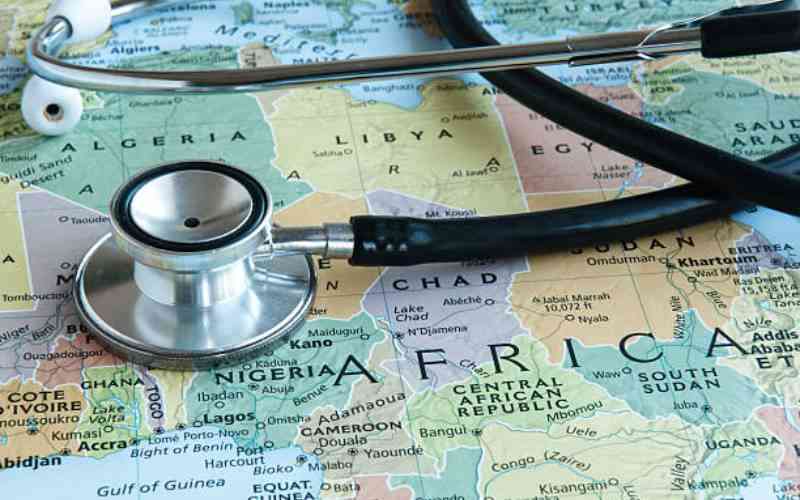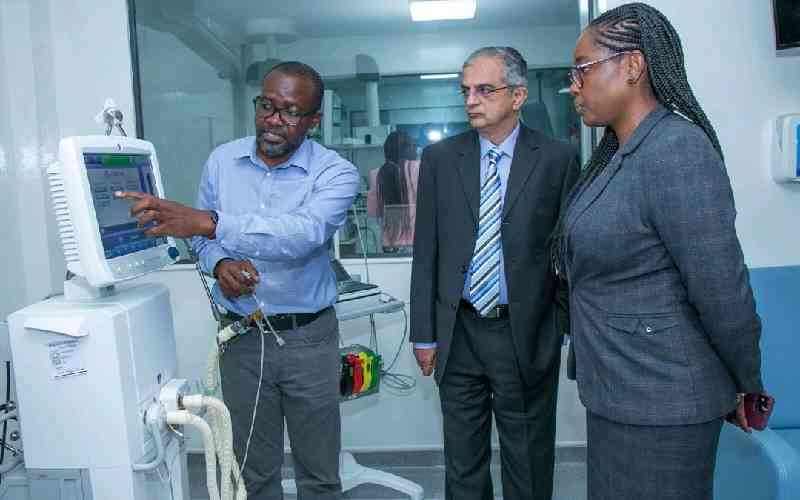Improving healthcare quality is an important component for many nations and institutions. Vision 2030 recognises the requirement for provision of quality health care
The Constitution affirms “the highest attainable standard of health” as a fundamental right of every citizen. While considerable progress has been made since the start of the Millennium Development Goals, less than one-third of countries in the world met them.
According to World Health Organisation (WHO), the risk of a child dying before five years in Africa is still eight times that of Europe (95 compared to 12 per 1,000 live births respectively).
WHO also informs that global life expectancy at birth is 71 years compared to that of Kenya estimated at between 58 to 62 years.
Kenya has among the highest maternal mortality rates in the world - ranging between 250 and 680 (estimated average 488 in 2013) per 100,000 deliveries, making the country rank in the top ten countries with the highest maternal mortality rates.
Kenya’s per capita expenditure on health stands at $169 (Sh17,000) compared to say Netherlands (which was recently in the news as one of the countries with the best healthcare) at $5,202 (Sh520,400).
While the Constitution affirms that the highest attainable standard of health is a fundamental right of every Kenyan, the government has operationalised this aspiration through increased provision of healthcare facilities, equipment and personnel.
This has resulted in tangible improvement in reduction of maternal deaths (down 488 to 362 per 100,000 deliveries), reduction of infant mortality (down from 74 to 52 per 1,000 infants) and increased childhood immunisation (up from 60 per cent to 80 per cent coverage).
The private healthcare services are part of the wider health sector in Kenya. The private health sector compliments the government efforts in aspiring to provide the highest attainable quality of healthcare.
The private health sector’s approach to achieving this is no different from that of the government, albeit at the institutional level.
Financial access
Private hospitals have worked to increase access to mwananchi. “Access” includes geographical access and financial access. Geographic access is about how the patients find their way to the hospital. Distance is a determinant of patient’s choice of hospital.
This effect is more in the elderly, rural and those from poorer neighbourhoods. Private hospitals have seen a growth in the physical facilities with increased in outpatient services thus increasing geographical access through a proliferation of clinics.
As an example, Aga Khan University Hospital has 42 private outpatient clinics across the country. This growth in physical facilities has also seen an increase in inpatient bed capacity as apparent in Nairobi Hospital, Avenue Hospital and MP Shah hospital and planned increase at Aga Khan University Hospital, Nairobi and Aga Khan Hospital Mombasa and Kisumu, just to mention a few.
The increased bed capacity is accompanied by a rise in specialised facilities with specialised equipment such as intensive care units, neonatal units that can take care of extreme premature babies, specialised diagnostic services such as MRIs and soon to be acquired Positron Emission Tomography (PET) scans - an imaging test that allows doctors to check for diseases in the body. Improvement in facilities and equipment is driven by increased demand and an increase in highly skilled personnel who hitherto were unavailable in Kenya.
Stay informed. Subscribe to our newsletter
Aga Khan University Hospital, Nairobi, routinely undertakes minimally invasive complex brain surgery without opening up and exposing the entire brain, and heart valve replacement without having to open up the heart.
Minimally evasive gynaecological and general surgery have become so common - that they are now incorporated as part of the standard curricula taught at Aga Khan University’s Medical College in Nairobi.
Further, with the increasing complexity of medicine, it is imperative to articulate clear controls to ensure that service is delivered in an ethical, efficient and high-quality manner.
This implies rigorous quality checks (internal and external to the institution) for diagnostic services. For clinical practices, this means benchmarking services to those of international best practices. This is done through subscribing to international accreditation services such as the Joint Commission International among many others.
Such accreditation services require benchmarking of individual clinician performance to that of peers as well as international standards.
All these cost money. Facility upgrade, capital equipment purchase and maintenance, as well as the remuneration of highly skilled clinical staff, cost a lot of money. Various aspects of quality control and accreditation are all expensive.
Budget allocation
In the government, this has resulted in an increase in the health budget allocation for Financial Year (FY) 2014/15 of Sh47.4 billion, to FY 2016/17 allocation of 60.3 billion.
While in government, this is funded by increasing tax levied and improved tax collection, supplemented by internal and external borrowing, in the private sector, most of the costs are raised through operations of hospitals through patient’s fees and loans for large capital expansion.
Most of the private hospitals in Kenya are run on a “not for profit” basis indicating there is no dividend pay-out; surplus generated is retained for investment and growth and a significant portion of the total revenue allocated to welfare.
The law also obliges hospitals to treat all emergencies irrespective of ability to pay. The government does not reimburse this. At the Aga Khan University Hospital, about 200 patients were treated last year as an emergency at the Accident and Emergency department without any payment.
In the private health sector in Kenya, where the surplus is usually less than 17 per cent, Aga Khan University Hospital, Nairobi as an illustrative example spends three per cent of the revenue on welfare - which goes to treating patients who cannot afford the services (mainly cancer and cardiac patients) and free medical camps. An additional 10.5 per cent goes to the cost of training much-needed specialists deployed across the country upon completion of training.
About 2.5 per cent further depletes the surplus due to bad debts. Further, additional 3.5 per cent is used in servicing loans.
Thus the net margins in private hospitals, in spite of the perception of being expensive are razor thin and this reduces operational flexibility. Thus the only option available is to strive for high operational efficiency. The razor thin margins are what is used for growth and development.
Large private hospitals have components that are loss making but essential for providing comprehensive service. These included critical care units such as ICU, Neonatal ICU, High Dependency Units, and Coronary Care Units among others) and Accident and Emergency departments. These units are supported by profit centres within the hospital.
Profit centres
It is, therefore, unfair competition for the government to allow free standing profit centres such as imaging (x-ray) centres and laboratories that can undercut the diagnostic services of the large hospitals and potentially run them out of business.
The cost structure of the large private hospitals implies they are unable to compete on the basis of price (fee charged to patients). However, financial access is more than just the cost of service but more about the quality of service received per cost.
That is, it is about the value for money. Patients may be willing to pay higher costs for a higher guarantee of success.
This is key to driving overall quality in the country by changing the basis of competition to that of quality per shilling spent.
This will incorporate both clinical outcomes as well as the mode of delivery of the services.
The writer is an Associate Dean, Clinical Affairs and Chief of Staff at Aga Khan University Hospital, Nairobi.
 The Standard Group Plc is a
multi-media organization with investments in media platforms spanning newspaper
print operations, television, radio broadcasting, digital and online services. The
Standard Group is recognized as a leading multi-media house in Kenya with a key
influence in matters of national and international interest.
The Standard Group Plc is a
multi-media organization with investments in media platforms spanning newspaper
print operations, television, radio broadcasting, digital and online services. The
Standard Group is recognized as a leading multi-media house in Kenya with a key
influence in matters of national and international interest.
 The Standard Group Plc is a
multi-media organization with investments in media platforms spanning newspaper
print operations, television, radio broadcasting, digital and online services. The
Standard Group is recognized as a leading multi-media house in Kenya with a key
influence in matters of national and international interest.
The Standard Group Plc is a
multi-media organization with investments in media platforms spanning newspaper
print operations, television, radio broadcasting, digital and online services. The
Standard Group is recognized as a leading multi-media house in Kenya with a key
influence in matters of national and international interest.








